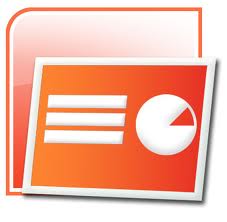The Digestive System
The digestive system is one of the easiest ones for students to directly relate to. The taking in and digestion of food involves a series of mechanical and chemical steps that incorporate elements from the basics of cell anatomy and chemistry that were covered earlier in the course. The breaking down and absorption of the large molecules into smaller ones is a very methodical one that many students have an easy time following.
Digestive System Lecture Powerpoint
 |
Purpose: This Powerpoint lecture follows the physical and chemical changes that food goes through after ingestion. Beginning with the mechanical chewing and chemical action of amylase in the mouth, students will trace the gradual breaking apart of the large proteins, carbohydrates, and fats that make up their diet, leaving behind only undigestible waste.
Essential Concepts: Chemical digestion, mechanical digestion, enzymes, amylase, pepsin, trypsin, lipase, salivary glands, esophagus, epiglottis, stomach, small intestines, large intestines, appendix, rectum.
Digestive System Student Notes Outline
Purpose: Taking efficient notes can be a big challenge for many students, especially when working from a Powerpoint lecture. This outline gives students a means to take notes that guides them toward important concepts and avoids the pitfalls of writing word-for-word or simply not taking notes at all. The outline lays out each of the key concepts, ideas, and blank diagrams that students are expected to learn. They fill in the missing details as the lecture proceeds.
Essential Concepts: Chemical digestion, mechanical digestion, enzymes, amylase, pepsin, trypsin, lipase, salivary glands, esophagus, epiglottis, stomach, small intestines, large intestines, appendix, rectum.
Anatomy for Beginners - Digestion Video Worksheet
Purpose: This episode of the Anatomy for Beginner series, hosted by Dr. Gunther von Hagans, gives students another perspective on the digestive system. He takes a simulated piece of food and traces its path through the body of a cadaver. He dissects out the entire digestive tract, including the esophagus, epiglottis, stomach, and intestines. The episode concludes with the stretching out of the entire human intestinal tract, ending up at a total of 7 meters.
Essential Concepts: Abdominal cavity, esophagus, epiglottis, stomach, liver, pancreas, small intestine, large intestine, rectum, hepatic portal system.
The Effects of Temperature on Amylase Enzyme Lab
Purpose: This lab has students add amylase enzyme to starch solutions at different temperatures, ranging from ice bath to boiling. Iodine will be added, then students will record the amount of time necessary for the amylase to hydrolyze the starch. This lab will give students the opportunity to actually visualize the action of amylase while measuring the effect of temperature on the activity of an enzyme.
Essential Concepts: Amylase, glucose, starch, hydrolysis, enzymes, denaturation.
Pepsin Enzyme and pH Lab
Purpose: This lab is similar to the amylase one except that the action of pepsin will be visualized using Biuret as an indicator solution. Since pepsin is most active in the stomach, students will compare its action under different levels of pH.
Essential Concepts: Pepsin, enzymes, pH, protein, amino acids, denaturation.
Digestive System Study Guide
Purpose: This study guide is a condensed listing of the major vocabulary words from this chapter, along with a set of practice questions and diagrams similar to what might be on a written test. The questions and vocabulary are roughly written in the same order as they appear in the lecture.
Essential Concepts: Chemical digestion, mechanical digestion, enzymes, amylase, pepsin, trypsin, lipase, salivary glands, esophagus, epiglottis, stomach, small intestines, large intestines, appendix, rectum.
